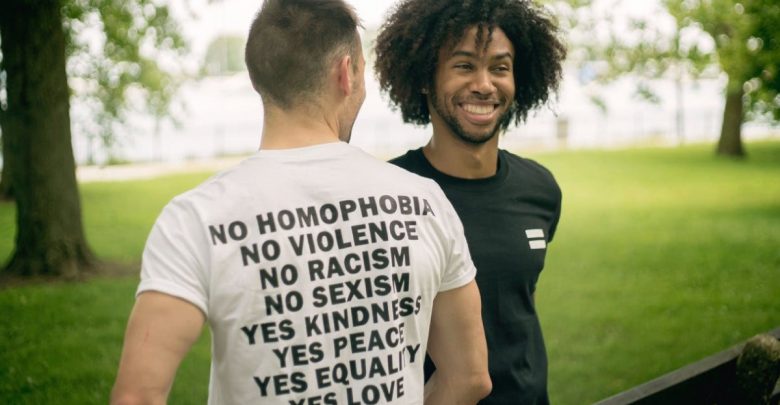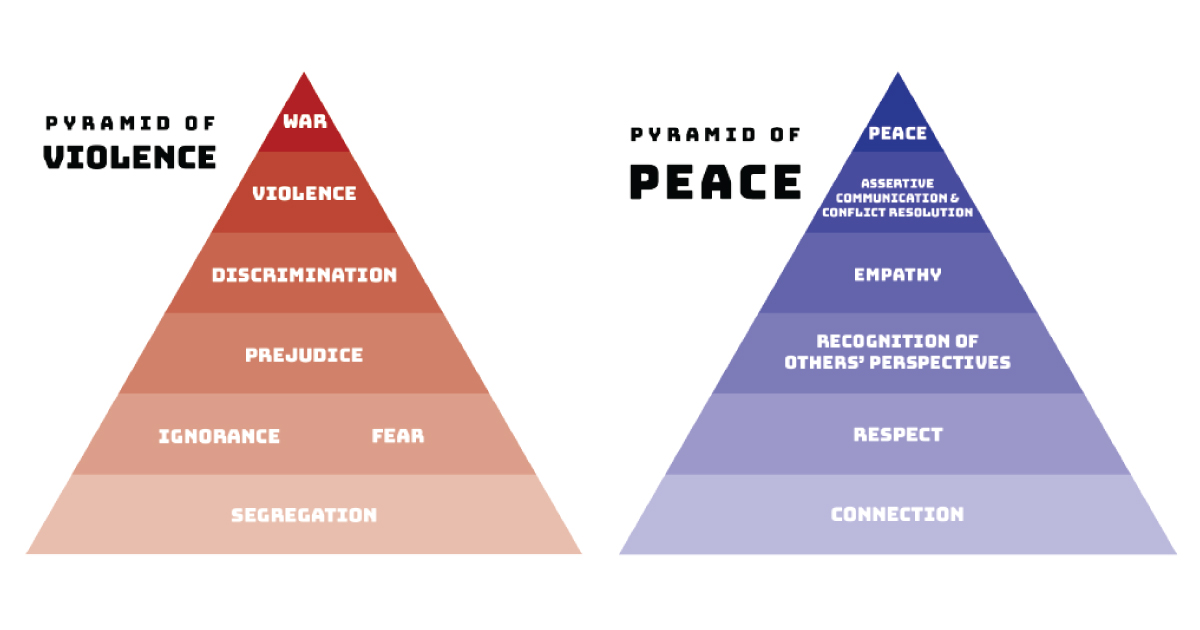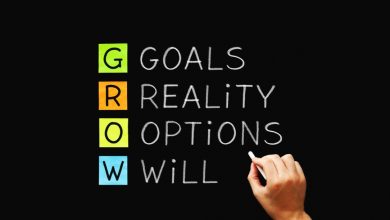Unity in diversity
Working with learners from diverse backgrounds

Nowadays having learners from diverse backgrounds in one room is more common than ever before. It comes with challenges, but if managed well, diversity can lead to a unique “masterpiece” of an experience.
There is a great saying by organizational psychologists that “The worst kind of group for an organization that wants to be innovative and creative is one in which everyone is alike and gets along too well.” Many organizations are recruiting people from diverse backgrounds so that there will be more creativity, innovation and growth. Certainly, it comes with some struggles, but when weighed against the alternatives, the gain is many times greater.

Working with learners from diverse backgrounds
In the arts, there are many examples of how different styles or genres are combined into one masterpiece, and the outcome is often better than the sum of all of its parts. Art literally shows how different backgrounds can be united into one piece of art, with a great example being the song “Bohemian Rhapsody.”
This six-minute song consists of several sections without a chorus: an intro, a ballad segment, an operatic passage, a hard rock part and a reflective coda. When “Queen” released this song, they received quite a lot of criticism because of the mixture of styles, however, Bohemian Rhapsody has become Queen’s most popular song and is considered one of the greatest songs of all time.
Another example is the band Dakha Brakha, a Ukrainian folk quartet that combines the musical styles of several ethnic groups creating floating energy and dynamic music.
What are the difficulties in working with learners from diverse backgrounds?
First, let’s understand what is meant by learners from diverse backgrounds. These are learners who come from different countries, represent different nationalities, ethnicities, or religions.
But, these can also be learners who come from urban or rural areas, learners who have been involved in the educational system or those who have been not, learners who have lived in a family and know what it means to be loved and cared for, and learners who have been raised in an orphanage or a foster care. Diverse backgrounds can include various aspects, the key is that the learners come from different places or have different life experiences. In a training context, not all of these aspects might come to the surface, but some will for sure – normally the ones that have impacted someone the most.
Some years ago, I was working with a group of youth in prison. The group was comprised of both boys who had been imprisoned and other who were from a local NGO that only came to the prison for the workshops. At the time, I thought that the main aspect that distinguished them is that one group lived outside the prison and the other lived inside the prison. Only after a few workshops, did I realized that the youth had totally different understandings of the words “challenges in life”, “trust”, “friendship”, “cooking”, “pain”, and “hope”. The youth who had spent months or even years in prison faced much greater life challenges: they had lost trust in many people and wouldn’t trust people when meeting a new person; their perceptions of friendship and belief in other people was significantly impacted; some of them even forgot how to spread butter on the bread or cut a cucumber. Youth in prison experienced an inner pain that was created by guilt and was present every time they spoke to a new person, especially about personal things. Therefore, in this example, the main challenge was not that the youth come from diverse backgrounds but is in how they perceived themselves in the group and how they perceived others.
Summarizing, two main difficulties in working with learners from diverse backgrounds are:
- Having an attitude that you are different from others can escalate into ignorance and eventually fear; and
- You can underestimate or overestimate people from different backgrounds, leading to lower levels of self–esteem, shyness, or arrogance towards other participants.
What makes diversity even more interesting is the fact that psychologically all people have some opinion about others when they meet, all people relate themselves to other people and make comparisons. This is something that we cannot change when we work with a group of learners. What we can change is how learners deal with differences – their own and the ones of others.
A great model that summarizes the challenges and benefits of diversity is the Pyramid of Violence and the Pyramid of Peace (source: https://mosaicproject.org/about/approach/theory/)

The Pyramid of Violence is organized in increasing levels of attitudes and behavior that grow from the bottom to the top. Like a pyramid, the upper levels are supported by the lower levels and it all starts with segregation and biased attitudes like ignorance and fear. People seek to find information to confirm their biases, which later, can lead to prejudice, escalating through discrimination and violence to all-out war. The pyramid clearly shows that everything starts with the perception of the self in comparison with the other. Therefore in the training context, it is crucial to focus on what is uniting a group, what they have in common.
On the other side, the Pyramid of Peace shows that empathy and assertive communication, key components to achieving peace, do not happen immediately. There has to be a solid foundation of connection, respect and recognition of others’ perspectives. Simply placing a diverse group of people together is not enough to break down stereotypes and prejudice. All members of a group need to be treated as equals, to share common goals and have opportunities for cooperation, collaboration, and positive, non-competitive interactions with one another.
What are the benefits of learning with people from diverse backgrounds?
Try to remember your first learning experience together with people from diverse backgrounds.
Where was it? What kind of people were in the group? How did you feel at the beginning? Did your feelings change during the session? What were your insights as the session progressed? What did you gain from this experience? What did you learn about yourself? What did you learn about others?
____________________________________________________________________________________________________________________________________________________________________________________________________________________________________________________________________________________________________________________________________________________________________
I believe that you will realize how many things we can actually gain when learning in a diverse group. There is no surprise that youth exchanges, youth work opportunities, and international training courses are, for many people, their life-changing experience.
Some of the benefits that are based on studies of learning with people from diverse backgrounds:
- Builds confidence. Learning about different cultures allows people to become comfortable with a cultural difference across groups and comfortable with themselves, leading to a deeper sense of safety and self-confidence. (https://srcd.onlinelibrary.wiley.com/doi/abs/10.1111/cdev.12834);
- Promotes empathy and reduces prejudice. Being educated about diversity can counter discriminatory stereotypes. Through understanding various cultures and social groups, people can make connections between their own lives and the lives of others. Learning about diversity increases cross-cultural competencies, which in turn allows people to be empathetic to the experiences of others. (https://tcf.org/content/report/how-racially-diverse-schools-and-classrooms-can-benefit-all-students )
- Fosters creativity. Learning with people from diverse backgrounds encourage problem-solving, critical thinking, and creativity. In group work, people bring various perspectives that challenge their peers to think creatively and collaborate to find an appropriate solution for the whole group. When people are given the opportunity to work with a diverse group of peers, or with topics that discuss diversity, they can confront stereotypes and discover similarities.
What does it mean to work effectively with learners from diverse backgrounds?
In the business world, effectiveness is related to the term “KPI” – key performance indicators. When organizations define their KPIs, they ask some of the following questions:
- What is our desired outcome?
- Why does this outcome matter?
- How are we going to measure progress?
- How can we influence the outcome?
- Who is responsible for the outcome?
- How will we know that we have achieved the outcome?
When it comes to non-formal education, the word “effectively” is seen more abstractly. The focus is much more on the process rather than on the outcome. Based on my own experiences with many diverse groups, I want to define what it means to work effectively with learners from diverse backgrounds:
- Learners are aware of the diversity inside the group;
- Learners embrace diversity by respecting different backgrounds, belief systems, and habits;
- Learners are curious and open to new perspectives that derive from diversity; and
- Learners use different perspectives in creating something with greater value.
How does this apply to be a trainer?
Working effectively with learners from different backgrounds can be a challenging process, especially if the issue of diversity is not approached at the beginning of the process or training course. During group work, people might start to focus on their differences, become more biased and even create new prejudices. Just by putting people in the same learning context, we cannot expect that tolerance, empathy and effective work will happen on its own. Some things that will help set an open tone of inclusion:
- at the beginning of the training offer a safe space/activity to discuss issues that separate and unite learners;
- offer challenging but achievable tasks that require diverse teams to work together and once the tasks have been completed, provide time for reflecting both on the task and the team-work;
- cultivate a sense of shared purpose and identity among diverse learners; and
- if problems appear, do not wait for them to naturally resolve or disappear, because, instead, they might escalate. Proactively put the issues on the table and facilitate an open discussion.
- There is always diversity in a group, sometimes it is obvious, but often it isn’t. Once you become skilled at helping a group understand diversity and see it as a strength, teams will come together more quickly and many of their experiences will be more meaningful.
Exercises
Title: Diversity and inclusion in flower petals
Instructions:
- Divide people into groups of 4 – 6 participants. Give each group a large piece of paper and colorful markers;
- Tell each group that they have to draw a large flower, it should have a round center and one petal for each member of the group (e.g.: 5 members of the group = five petals);
- After a brief discussion, each participant should fill their petal with something unique about themselves – something related to their background that makes them stand out from the others;
- The center of the flower should be filled with a list of commonalities amongst the whole group, things that unite them all. Challenge the group to really explore what is uniting them;
- All flowers should be hung on the wall next to each other, as in a gallery, and all participants should take time to go around and get to know flowers from other groups; and
- Invite everyone to sit in a circle and reflect on the following questions:
- Explain your experience during this process?
- Was it difficult to find and share something unique about yourself concerning your background?
- How was it to hear unique things from other group members?
- What were the common elements in all of the flowers that are uniting everyone?
What is this exercise about?
Reflection Questions
- What is most challenging for you when working with learners from different backgrounds?
- How can you work more effectively with learners from different backgrounds?
- What do you think learners feel and think when they come to training and meet other people from different backgrounds?
The power of diversity within yourself
“In sports, a team is surrounded by people with different backgrounds, with different races, and with different religions. In order to win, everybody comes together. Everyone just has to come together in order to win.” Rob Gronkowski
“Sometimes you gotta remember, everyone wasn’t raised like you.” Unknown author






